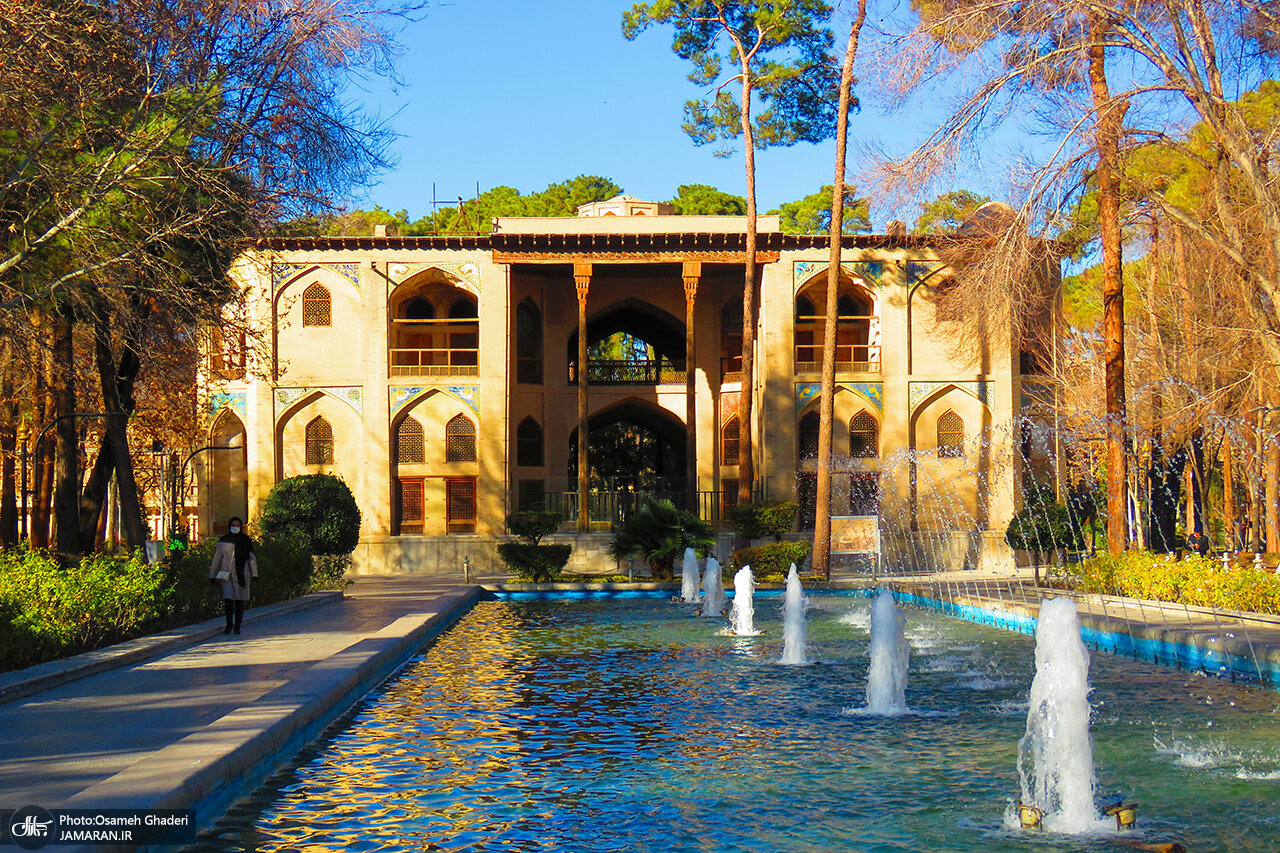Hasht Behesht Palace: a jewel of Safavid architecture

TEHRAN – Nestled in the heart of Isfahan, Hasht Behesht Palace stands as one of the most exquisite remnants of the Safavid era. Known as one of the last royal residences of the Safavid kings, this majestic palace has long been celebrated as one of the most beautiful of that epoch.
The name “Hasht Behesht,” meaning “Eight Paradises,” evokes an image of divine splendor, and the palace lives up to its title through its remarkable architectural brilliance and intricate decorations.
A palace amidst a garden
The Hasht Behesht Palace is located within a vast garden, originally part of the Naghsh-e Jahan Garden, also referred to as the Nightingale Garden. This green oasis was established under the orders of Shah Ismail I, the founder of the Safavid dynasty.
Though much of the original garden has vanished over time, the surrounding park remains one of Isfahan’s most famous promenades, offering visitors a glimpse into the grandeur of the past.
Architectural marvel and unique design
Completed in 1080 AH (1669 CE), the palace is an octagonal masterpiece, distinct for its four façades, each sharing similarities yet possessing unique characteristics. While the northern façade appears to be the main entrance, the presence of a beautifully designed pool on the eastern side suggests that the main façade is indeed located there. Elevated two meters above ground, the two-story structure features staircases on all four sides, allowing easy access to the upper level.
The first-floor rooms at each of the four corners are adorned with elaborate stucco and delicate paintings, showcasing the finest Safavid artistic traditions. At the heart of the palace lies an intricately carved octagonal marble pond, known as the “Pearl Pool.” Its unique design allows water to seep through tiny perforations, creating a mesmerizing effect resembling scattered pearls.
A royal residence
Hasht Behesht Palace was more than an architectural wonder; it was also a royal dwelling. Historical accounts suggest that it housed eight wives of Shah Abbas, with four residing on the first floor and the other four on the second.
The palace’s design masterfully combined opulence with functionality, ensuring comfort while maintaining an air of regality.
Tiling and decorative splendor
One of the most captivating aspects of Hasht Behesht Palace is its magnificent tiling. The intricate patterns feature an array of birds, reptiles, and predatory animals, all rendered in vibrant colors and extraordinary detail.
These motifs not only demonstrate the artisans’ exceptional skill but also reflect the deep connection between Persian art and nature.
Historical significance and modern-day legacy
Isfahan flourished under the Safavid rulers, particularly during the reign of Shah Abbas I, who envisioned the city as a cultural and architectural hub. The construction of Chahar Bagh Street, meaning “Four Gardens,” played a crucial role in shaping Isfahan’s landscape. While most of the gardens that once adorned the city have faded into history, Hasht Behesht and Chehel Sotoun remain as enduring symbols of Safavid architectural ingenuity.
In 1964, Hasht Behesht Palace and its surrounding garden were entrusted to Iran’s then Ministry of Culture and Art. Today, the palace continues to captivate visitors with its timeless beauty, standing as a testament to the artistic and architectural mastery of the Safavid era.
Visiting the palace
Situated in the western part of Chahar Bagh Street, across from Sheykh Bahaei Street, Hasht Behesht Palace is easily accessible by public transportation. The closest stop is the Municipal Bus Station, making it a convenient destination for tourists.
Moreover, its proximity to other historical landmarks such as Naghsh-e Jahan Square, Chehel Sotoun Palace, Sheikh Lotfollah Mosque, Ali Qapu, Qeysarieh Gate, and the Imam Mosque makes it an essential stop on any journey through Isfahan’s rich cultural heritage.
Some local guides say the palace is a mesmerizing example of Persian architectural excellence, blending artistic elegance with historical grandeur. Whether admired for its intricate designs, captivating history, or serene surroundings, the palace remains an unmissable treasure in the heart of Isfahan. A visit to this legendary site offers a journey through time, allowing one to experience the opulence and ingenuity of the Safavid dynasty firsthand.
AM
Leave a Comment